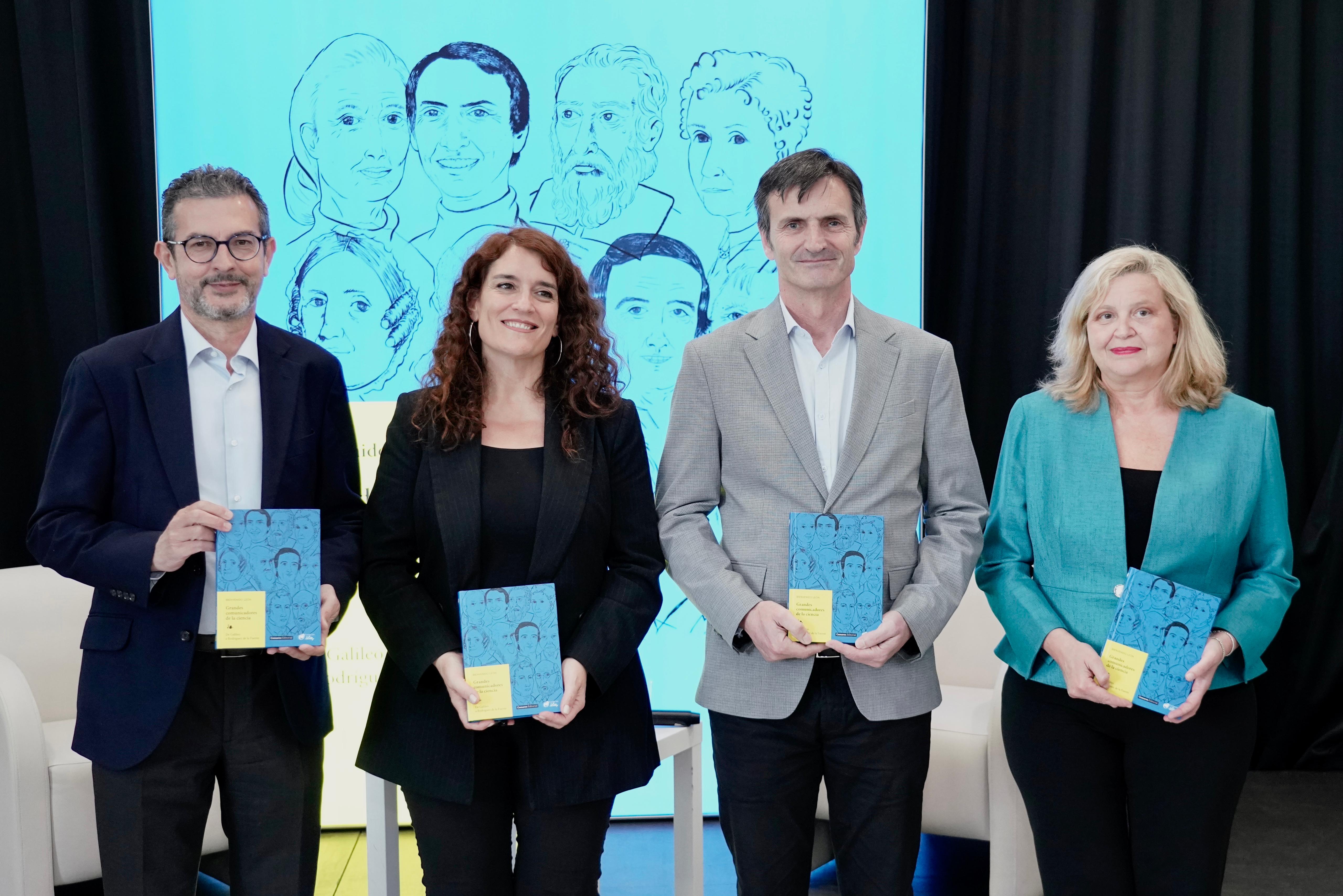THE LILLY FOUNDATION PRESENTS A BOOK THAT ANALYSES HOW THE BEST SCIENCE COMMUNICATORS IN HISTORY, FROM GALILEO TO RODRÍGUEZ DE LA FUENTE, HAVE COMMUNICATED SCIENCE
THE LILLY FOUNDATION PRESENTS A BOOK THAT ANALYSES HOW THE BEST SCIENCE COMMUNICATORS IN HISTORY, FROM GALILEO TO RODRÍGUEZ DE LA FUENTE, HAVE COMMUNICATED SCIENCE
THE LILLY FOUNDATION PRESENTS A BOOK THAT ANALYSES HOW THE BEST SCIENCE COMMUNICATORS IN HISTORY, FROM GALILEO TO RODRÍGUEZ DE LA FUENTE, HAVE COMMUNICATED SCIENCE
● Written by Bienvenido León, Professor of Science Communication at the University of Navarra, Grandes comunicadores de la ciencia: de Galileo a Rodríguez de la Fuente examines the life and work of ten great figures.
● Thanks to the popularisation of science throughout history, technical knowledge has effectively reached society, which has changed the way we understand the world.

Madrid, 16 May 2024 - The great science popularisers of history have changed the way we understand the world. All thanks to the fact that they have made science interesting and even exciting for the general public. Intending to analyse how they have successfully achieved this complex task, the Lilly Foundation has presented the book Grandes comunicadores de la ciencia: de Galileo a Rodríguez de la Fuente by Bienvenido León, Professor of Science Communication at the University of Navarra.
José Antonio Sacristán, Director of the Lilly Foundation, highlights the value of this work, as it provides some of the keys to successfully communicating science beyond the expert community. ‘Only if society understands science will it be able to take an interest in it. This is essential in our country, where only 12.3% of the participants in the last survey on Social Perception of Science and Technology in Spain stated that they were interested in scientific content. Among the reasons given by respondents, ‘lack of knowledge’ (33.0%) stood out’.
An enormous talent for communicating
This book, published by Comares, brings together the narrative techniques of ten great communicators: Galileo Galilei, Jane Marcet, Alexander von Humboldt, Charles Darwin, Santiago Ramón y Cajal, Rachel Carson, Félix Rodríguez de la Fuente, Carl Sagan, David Attenborough and Jane Goodall. ‘Some have been great writers, for example Darwin; others, like Humboldt or Rodríguez de la Fuente, great orators. What they have in common is their enormous talent for communicating,’ explains Bienvenido León. ‘Moreover, beyond this talent, they all agree on the importance of democratising science, that is, making this technical knowledge reach society in an effective way.
In the words of Gema Revuelta, director of the Studies Centre on Science, Communication and Society at Pompeu Fabra University, with whom the author held a colloquium at the presentation of the book, it could be said that they are all ‘undisciplined’ for three reasons: they relate knowledge generated from different disciplines, beyond their own; they all have an intense curiosity for the arts and use their knowledge of music, drawing, literature and public speaking in their communication; and they question norms and conventions. ‘They go outside their academic, intellectual and even gender circles to bring science to populations with little access to more technical knowledge,’ he says.
Science for popular culture
Through a compilation of ideas, press clippings, articles, and books, Bienvenido León analyses how scientific language has evolved since Galileo, first on the list for being a pioneer in writing scientific works in the Italian of the time instead of in Latin, the most common at the time. ‘This is a fact of great significance, as it presupposes an interest on the part of the Florentine genius to reach beyond the circle of experts of the time; in other words, it reveals a popularising intention,’ says the author.
Humboldt, Darwin and Cajal are scientists who occupy the most prominent places in the history of science. However, their facet as communicators who tried to bring their knowledge to society is less well known. On the other hand, some great popularisers are not scientists. This is the case, for example, of Jane Marcet, who decided, in a simple way, to inform the general public, especially women, about the content of the complex chemistry lectures she attended.
In the 20th century, Rachel Carson, an icon of modern ecology, succeeded in placing ecology at the centre of society's concerns. With the evolution of divulgation at that time, scientific knowledge even became the focus of television programmes followed by millions of people around the world, making science part of the popular culture. It is worth mentioning, for example, Félix Rodríguez de la Fuente, the great Spanish populariser of nature, or Carl Sagan, whom León calls the ‘science showman’.
The list closes with two current science communicators, David Attenborough and Jane Goodall, both of whom have been communicating science for many decades and whose work is widely recognised.
Author: Press office Lily Foundation
